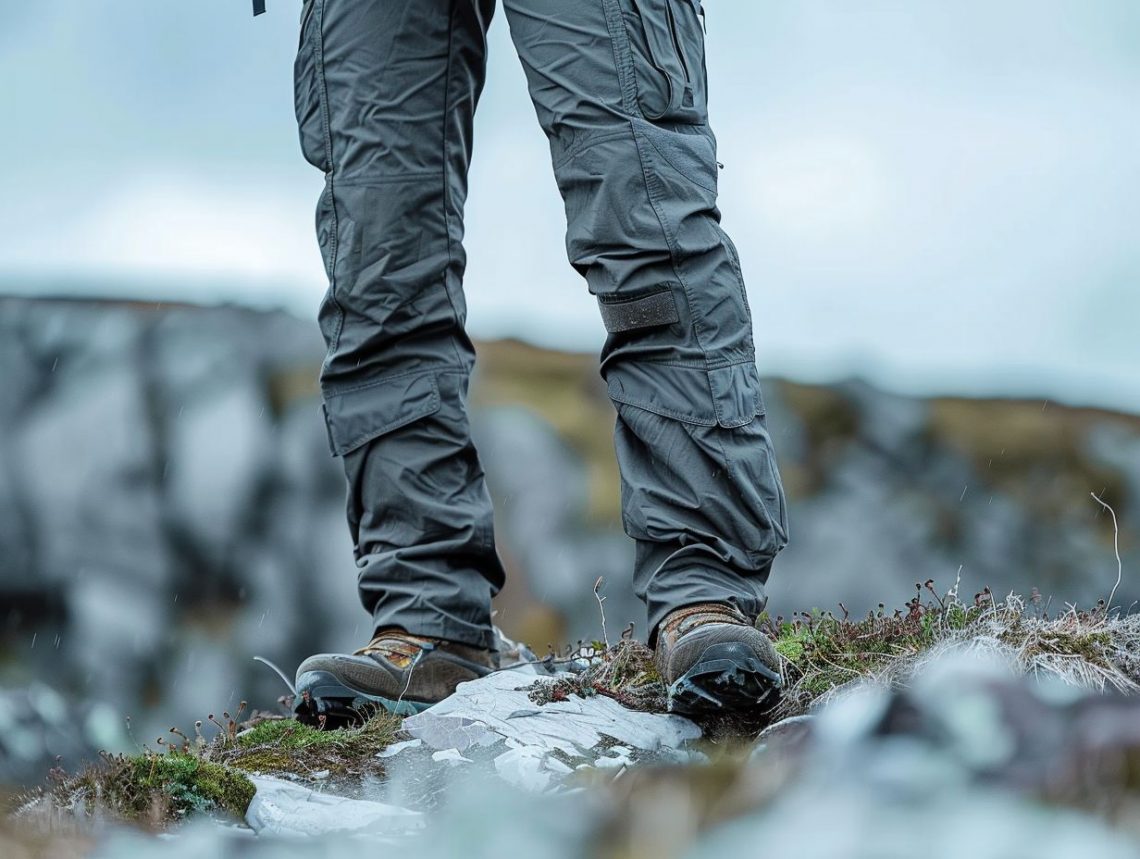
Hiking Pants For Kilimanjaro
Planning a hiking adventure to Mount Kilimanjaro? Choosing the right hiking pants is crucial for comfort and protection during your journey.
We discuss key factors to consider when selecting hiking pants for Kilimanjaro, including material, waterproofing, and fit. Exploring different types of hiking pants suitable for the terrain, as well as tips for layering underneath. Guidance on selecting the correct size and caring for your hiking pants to extend their lifespan.
Join us as we unravel the essentials for gearing up for your Kilimanjaro trek!
Key Takeaways:
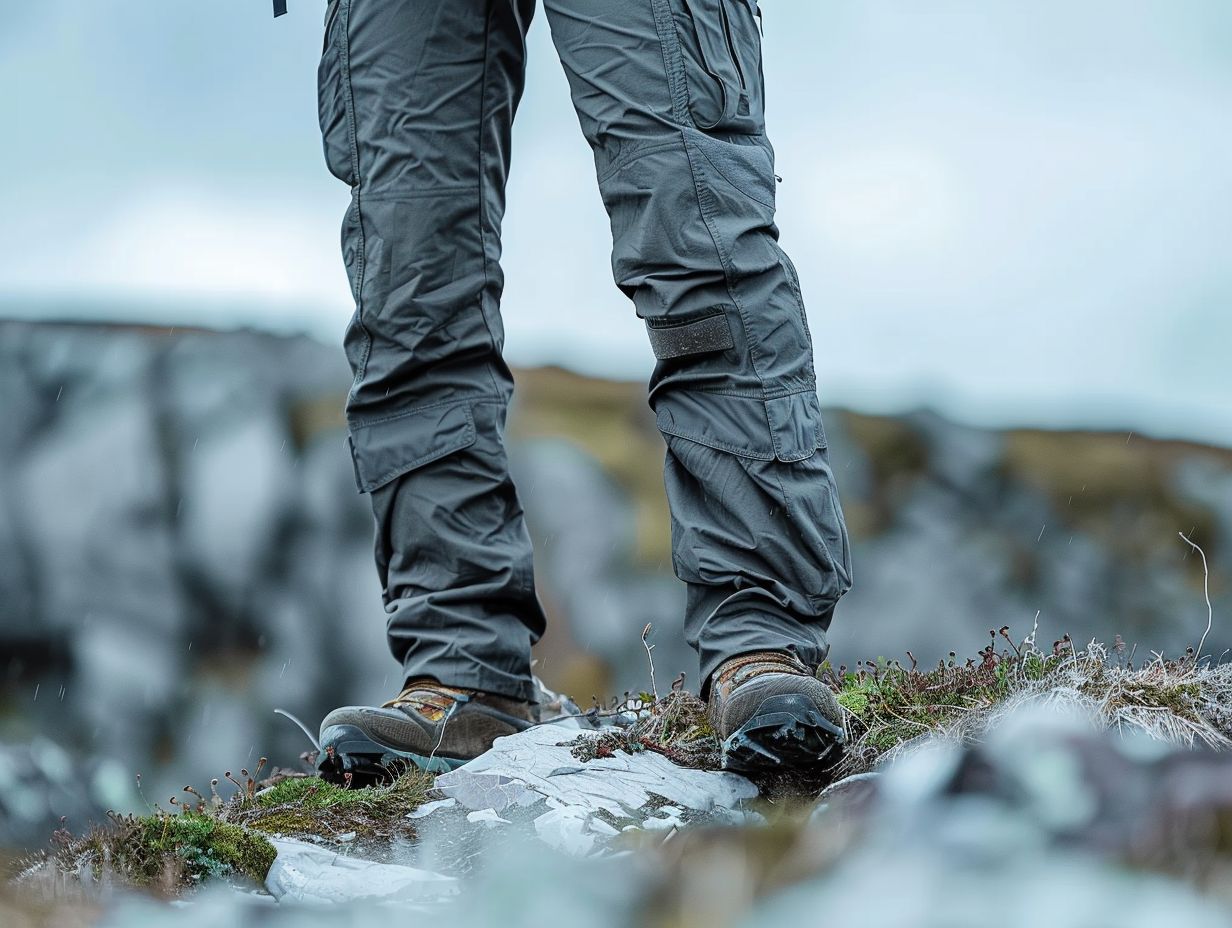
- Choose durable and waterproof materials for hiking pants on Kilimanjaro.
- Ensure comfort and proper fit for optimal performance.
- Consider the type of hiking pants based on the weather and personal preference.
What to Look for in Hiking Pants for Kilimanjaro?
Choosing the right hiking pants for Kilimanjaro involves considering various factors such as material, waterproofing, and comfort. Pants from reputable brands like Prana, Mountain Hardwear, and Patagonia are known for their durability and comfort, ideal for the challenging terrain of Kilimanjaro.
- Fabric and materials play a crucial role in the performance of hiking pants, especially when tackling a demanding trek like Kilimanjaro. High-quality fabrics like nylon and polyester blends provide excellent durability and abrasion resistance, essential for withstanding rugged terrains.
- In terms of waterproofing, brands like Arc’teryx and The North Face excel in using advanced technologies like Gore-Tex to keep you dry in wet conditions.
- Breathability is essential during strenuous hikes, and brands such as Columbia and Outdoor Research prioritize ventilation features like zippered vents for enhanced airflow.
- Comfort is a top priority for extended hikes, with brands like REI and Mammut incorporating stretch materials and articulated knees for unrestricted movement.
1. Material and Durability
When considering the material and durability of hiking pants, look for options crafted from high-quality fabrics like those offered by Prana, Mountain Hardwear, and Patagonia. These brands are known for their durable pants that can withstand the challenging conditions of Kilimanjaro.
- Prana, a reputable outdoor clothing company, utilizes innovative materials like organic cotton and recycled polyester in their hiking pants to ensure both comfort and sustainability.
- Mountain Hardwear, on the other hand, is renowned for incorporating advanced technologies such as Gore-Tex and Dry.Q into their designs, making them ideal for extreme weather conditions.
- Patagonia, a leader in outdoor apparel, pays special attention to the durability of their hiking pants by using bluesign® approved fabrics that promote environmental responsibility.
These brands not only focus on performance but also emphasize ethical practices in their manufacturing processes, setting them apart in the world of outdoor gear.
2. Waterproof and Breathability
For Kilimanjaro hiking, prioritize waterproof and breathable pants made from lightweight fabrics. Brands like Prana, Mountain Hardwear, and Patagonia offer waterproof options that keep you dry and comfortable in changing climates.
When taking on the challenging terrain of Kilimanjaro, having pants that can withstand the elements is crucial.
- The combination of waterproof and breathable properties ensures that you stay dry from external moisture while allowing sweat to escape, preventing you from feeling clammy and uncomfortable.
- Lightweight fabrics are ideal for long treks, as they offer ease of movement without weighing you down.
3. Comfort and Fit
When selecting hiking pants for Kilimanjaro, prioritize comfort and fit, opting for options with adjustable waistbands, moisture-wicking capabilities, and a comfortable feel.
Adjustable waistbands play a crucial role in ensuring a personalized fit, allowing hikers to adjust the waist size for optimal comfort and flexibility during long treks.
Moisture-wicking materials are essential in hiking pants as they help to keep the skin dry by wicking away sweat and moisture, preventing chafing and discomfort.
Renowned brands such as Prana, Mountain Hardwear, and Patagonia are known for their high-quality materials and construction, providing hikers with durable and comfortable pants that stand up to the demands of challenging hikes like Kilimanjaro.
4. Pockets and Features
Consider hiking pants with ample pockets, including zippered and mesh options, for convenient storage of essentials during your Kilimanjaro adventure. Look for features like adjustable waistbands and gear loops for added functionality on the trail.
- Zippered pockets provide secure storage for valuables or items you want easy access to without the risk of losing them on rugged terrains. The mesh pockets offer breathability and are ideal for storing snacks or lightweight gear.
- Adjustable waistbands ensure a comfortable fit, especially when layering up or down based on weather conditions.
- Gear loops come in handy for attaching equipment like carabiners, water bottles, or even trekking poles, making them easily accessible during your hike.
5. Weight and Packability
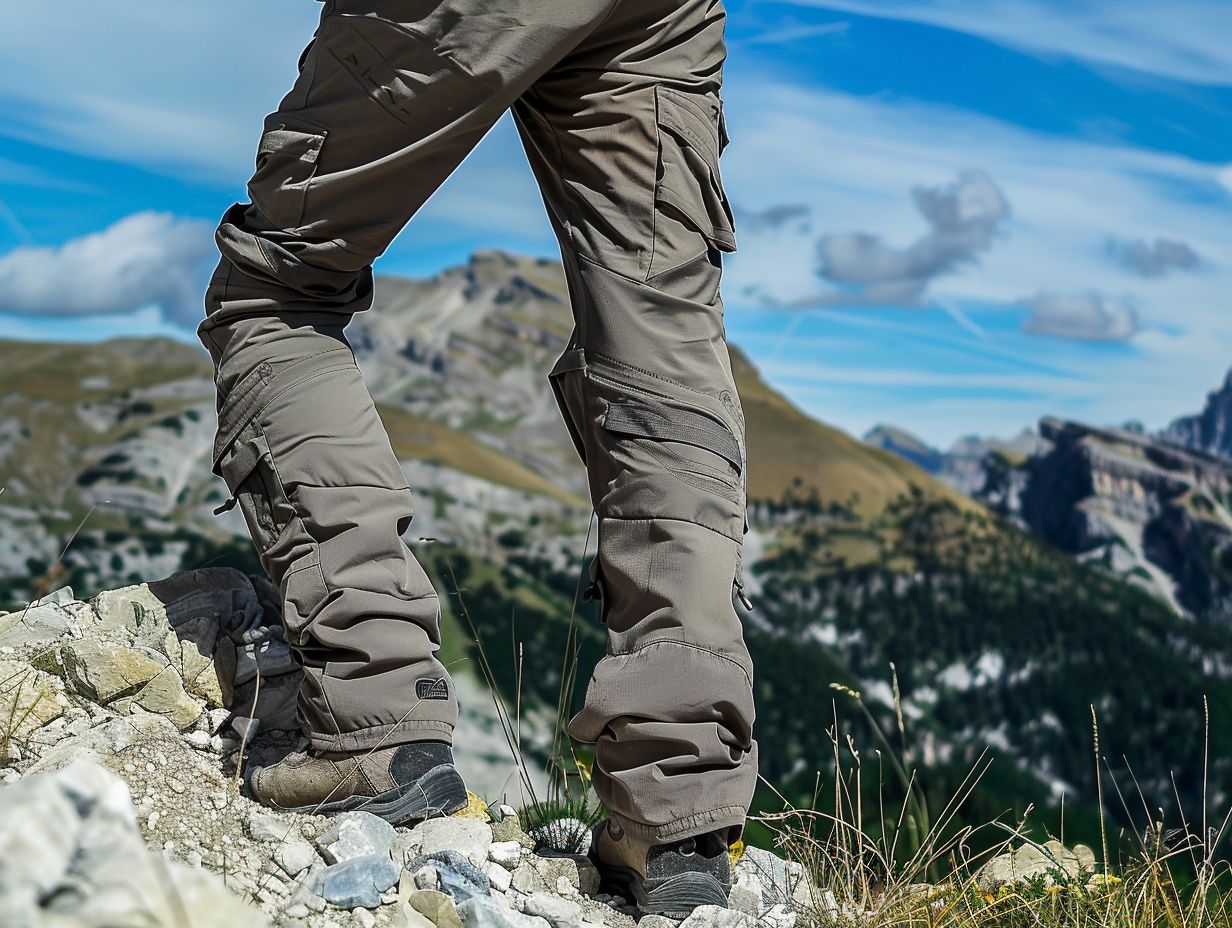
Prioritize lightweight and packable hiking pants for Kilimanjaro to ensure ease of movement and convenience during your trek. Opt for options that balance weight and comfort without compromising on essential gear storage.
Given the challenging terrain and varying weather conditions, having lightweight hiking pants is crucial for maintaining agility and comfort throughout your Kilimanjaro expedition.
These pants are crafted from advanced materials that offer durability and flexibility while providing ample freedom of movement.
Look for pants with strategically placed pockets, reinforced knees, and adjustable features to enhance functionality without adding unnecessary bulk.
Types of Hiking Pants for Kilimanjaro
Various types of hiking pants suit different needs on a Kilimanjaro trek, however, one should prioritize comfort and durability when selecting the right pants for your adventure.
1. Convertible Hiking Pants
Convertible hiking pants are versatile options for Kilimanjaro treks, offering the flexibility to adapt to changing weather conditions. Look for waterproof, breathable, comfortable, and durable designs to ensure optimal performance on your adventure.
When embarking on a challenging trek like Kilimanjaro, having clothing that can keep up with the changing environment is crucial. Convertible hiking pants, also known as zip-off pants, provide the perfect solution for dealing with both warm days and cool evenings as these pants can easily transform into shorts when the sun is beating down or convert back to pants if the temperature drops.
The waterproof feature of these pants ensures that you stay dry even in unexpected rain showers, preventing discomfort and potential health risks associated with being wet in cold conditions.
The breathable fabric allows for moisture and heat to escape, keeping you cool and dry throughout your hike.
Comfort is key on long adventures, and convertible hiking pants with their lightweight, stretchy materials provide ease of movement and a comfortable fit that won’t restrict your stride.
2. Softshell Hiking Pants
Softshell hiking pants offer a balance of comfort and durability, making them ideal for Kilimanjaro expeditions where flexibility and protection are essential. Consider softshell options for reliable performance in varying conditions.
Softshell hiking pants are designed with a stretchy and breathable fabric that allows for ease of movement, crucial when navigating challenging terrains on Kilimanjaro.
The material is also highly durable, able to withstand abrasions and tears, ensuring that your pants hold up throughout your trek.
The water-resistant properties of softshell pants provide protection against light rain and snow, keeping you dry and comfortable during unexpected weather shifts.
These features combine to offer hikers the versatility and performance needed to conquer the diverse conditions of Kilimanjaro.
3. Hardshell Hiking Pants
Hardshell hiking pants provide superior waterproof performance and durability, making them ideal for challenging conditions on Kilimanjaro. Choose hardshell options for reliable protection against rain and wind during your trek.
These pants feature advanced materials such as Gore-Tex, which repel water while allowing sweat to evaporate, keeping you dry and comfortable throughout your hike. The durable construction ensures they can withstand the abrasive terrain and rough conditions on the mountain.
Plus keeping you dry, hardshell hiking pants offer excellent protection against harsh winds and cold temperatures, ensuring that you stay warm and safe in all weather conditions.
Their reinforced seams and tough fabric can withstand the rigors of the trek, providing peace of mind and reliability during your Kilimanjaro adventure.
4. Insulated Hiking Pants
Insulated hiking pants offer additional warmth and comfort for cold conditions on Kilimanjaro, providing insulation against low temperatures. Consider insulated options to stay cozy and protected during chilly summit attempts.
These specialized pants not only keep you warm but also provide a high level of comfort, crucial for long hours of trekking. The insulation properties of these pants help retain body heat, ensuring you stay snug even when the temperature drops.
The material used in insulated hiking pants is breathable, preventing overheating and moisture buildup, which can be uncomfortable while on the move.
Their versatile design allows for easy movement, so you can hike with ease and flexibility. This is essential when navigating challenging terrains like Kilimanjaro.
The durability of insulated hiking pants ensures they can withstand rugged conditions, providing you with a reliable gear option for your adventure.
What to Wear Under Hiking Pants for Kilimanjaro?
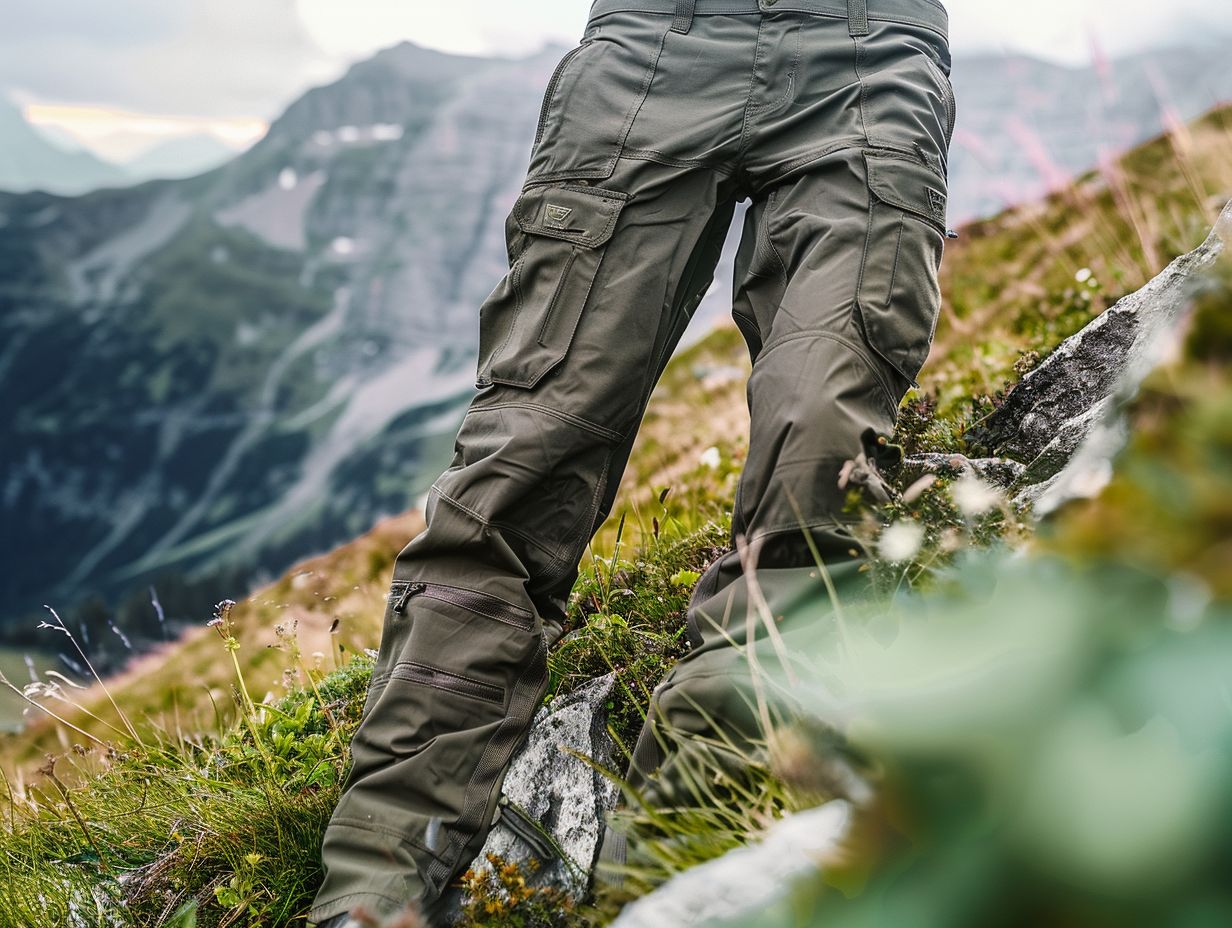
Choosing the appropriate layers to wear under your hiking pants is crucial for comfort and protection on your Kilimanjaro expedition. Consider base layers, mid layers, and outer layers to ensure optimal warmth and moisture management during your trek.
- Base layers are designed to be in direct contact with your skin, wicking moisture away to keep you dry and comfortable. They also provide a lightweight insulation to retain body heat.
- Mid layers act as insulating layers, trapping warmth while allowing moisture to escape. This helps regulate your body temperature in changing weather conditions.
- Outer layers, such as rain pants or windproof trousers, shield you from external elements like rain, snow, and wind. These layers help you stay dry and protect against hypothermia, especially at higher altitudes on Kilimanjaro.
1. Base Layer
The base layer worn under hiking pants on Kilimanjaro should be moisture-wicking, comfortable, and warm to provide a dry and insulated foundation for your trek. Choose base layers that offer both comfort and performance in varying climates.
This moisture-wicking property helps in regulating your body temperature and prevents chafing, ensuring a comfortable experience throughout your expedition. The warmth provided by these layers is essential for combating the chilly temperatures encountered at higher altitudes.
By investing in high-quality base layers, you can enhance your overall comfort, stay dry, and maintain optimal insulation as you conquer the majestic Kilimanjaro.
2. Mid Layer
The mid layer beneath your hiking pants for Kilimanjaro should provide insulation, warmth, and comfort to regulate your body temperature in changing environmental conditions. Select mid layers that offer the right balance of insulation and breathability for a comfortable trek.
Mid layers play a crucial role in your Kilimanjaro expedition by trapping air close to your body, creating a thermal barrier to keep you warm. These layers are designed to wick moisture away from your skin, preventing dampness and enhancing your comfort throughout the journey. They help in regulating your body temperature by retaining heat when needed and allowing ventilation when you start to overheat.
3. Outer Layer
The outer layer worn over your hiking pants on Kilimanjaro should offer protection against elements such as rain and wind, making it essential for maintaining comfort and dryness during your trek. Choose outer layers with waterproof and windproof features for optimal protection.
These outer layers play a crucial role in shielding you from the unpredictable mountain weather, which can change rapidly, bringing sudden downpours or gusts of wind.
Opting for garments that are specifically designed to be waterproof ensures that you stay dry even in heavy rain, preventing discomfort and helping you stay warm.
Similarly, windproof properties in your outer layer act as a barrier against the chilling winds that whip across Kilimanjaro’s slopes, reducing the risk of hypothermia and maintaining your body heat.
Look for materials that offer both waterproofing and wind proofing for a versatile shield against the harsh mountain conditions.
Tips for Choosing the Right Size for Hiking Pants
Selecting the right size for your hiking pants is crucial for comfort and mobility during your Kilimanjaro expedition. Consider factors such as fit, comfort, and range of motion to ensure your pants provide the necessary flexibility and performance on the mountain.
When choosing hiking pants for your Kilimanjaro trek, finding the right balance between a snug fit and ample room for movement is key.
Go pants with adjustable waistbands or stretch fabric to customize the fit according to your comfort level and body shape. Prioritize comfort by selecting pants with flat or reinforced seams to prevent chafing, especially on long hikes.
Remember, your hiking pants should allow you to move freely and comfortably, without hindering your stride or range of motion.
How to Care for Hiking Pants for Kilimanjaro?
Proper care of your hiking pants is essential to maintain their performance and longevity during your Kilimanjaro adventure. Follow guidelines for washing, drying, storage, and maintenance to ensure your pants stay in top condition throughout your mountain trek.
When hiking on Kilimanjaro, your pants are subjected to varying conditions such as dirt, moisture, and rugged terrain, making proper care crucial for their durability.
To maximize the lifespan of your hiking pants, always refer to the manufacturer’s instructions for washing. Typically, using a gentle detergent in cold water and avoiding fabric softeners is recommended to preserve the technical properties of the fabric.
After washing, ensure thorough drying to prevent mildew or odors. Hang your pants to air dry rather than using a dryer, as excessive heat can damage the fabric and compromise its performance.
When storing, avoid cramming them in tight spaces; instead, opt for hanging or folding them neatly to prevent wrinkles and maintain their shape.
1. Washing and Drying
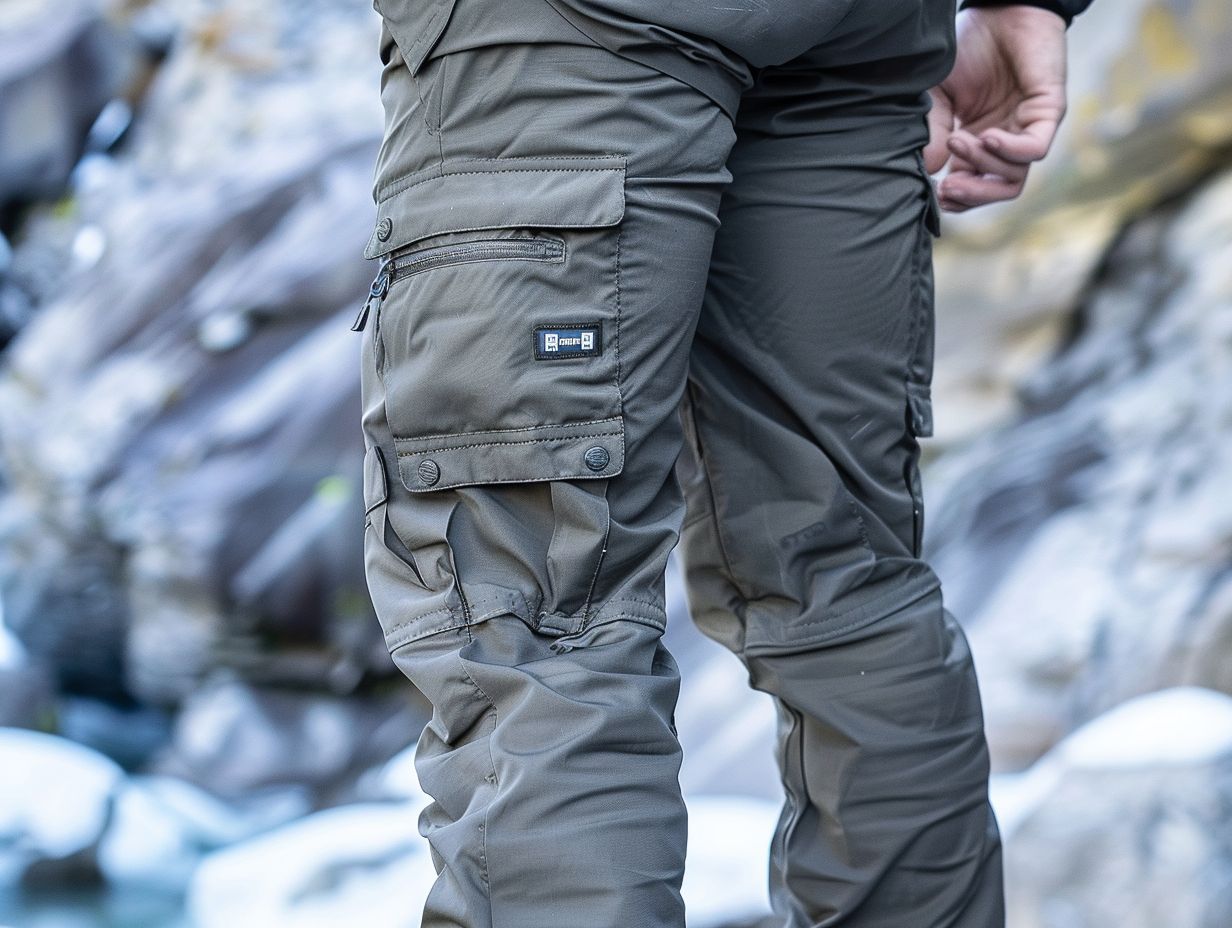
Maintaining clean hiking pants through proper washing and drying practices is essential for ensuring their performance and longevity during your Kilimanjaro trek. Follow care instructions to preserve the fabric quality and functionality of your pants.
When embarking on a challenging adventure like hiking up Kilimanjaro, the last thing you want is to be held back by subpar gear. Clean hiking pants not only offer comfort but also enhance performance by allowing the fabric to breathe and move freely.
Neglecting proper care can lead to odors, stains, and even compromises in the fabric’s integrity.
To keep your pants in top condition, consider washing them in mild detergent, avoiding fabric softeners, and air-drying them to prevent damage from high heat.
2. Storage and Maintenance
Proper storage and maintenance of your hiking pants are vital to prolong their lifespan and performance on your Kilimanjaro journey. Ensure your pants are stored in a dry, clean environment and follow maintenance tips to keep them in top condition.
In terms of storage, avoid damp or humid areas that could promote mold growth or mildew formation on your hiking pants, affecting both their durability and comfort. Consider investing in a breathable garment bag or airtight container to protect them from dust and pests.
- Before storing your pants, ensure they are clean and completely dry to prevent any odors or stains from setting in during storage.
- Regularly inspect your hiking pants for wear and tear, focusing on areas prone to stress such as knees and seat, and promptly repair any loose seams or small tears to prevent further damage.
For maintenance, follow the care instructions provided by the manufacturer, including washing with a gentle detergent and avoiding fabric softeners that can compromise the water-repellent coating.
| Quick Tips for Hiking Pants Maintenance: |
|---|
| 1. Avoid high heat when drying to prevent shrinkage or damage to technical fabrics. |
| 2. Reapply DWR (Durable Water Repellent) coating periodically to maintain water resistance. |
| 3. Store your pants flat or rolled up to prevent creases that could weaken the fabric over time. |
Frequently Asked Questions:
1. What are the necessary features to look for in hiking pants for Kilimanjaro?
A: When choosing hiking pants for Kilimanjaro, it is important to look for features such as durability, water resistance, breathability, and thermal insulation. These features will ensure your comfort and protection during the challenging terrain and varying weather conditions on the mountain.
2. Can I wear regular pants for hiking Kilimanjaro?
A: It is not recommended to wear regular pants for hiking Kilimanjaro. Regular pants may not have the necessary features to withstand the harsh climate and terrain of the mountain. Hiking pants specifically designed for mountaineering are a better option as they provide better protection and comfort.
3. What type of material is best suited for hiking pants for Kilimanjaro?
A: The best material for hiking pants for Kilimanjaro is a blend of synthetic and natural fibers. This combination provides durability, water resistance, breathability, and thermal insulation. Nylon, polyester, and merino wool are commonly used materials for hiking pants.
4. Do I need to wear thermal base layers under my hiking pants for Kilimanjaro?
A: It is recommended to wear thermal base layers under your hiking pants for Kilimanjaro. Base layers provide an extra layer of insulation and help regulate body temperature. They also wick away moisture from the body, keeping you dry and comfortable.
5. Are convertible hiking pants a good option for Kilimanjaro?
A: Convertible hiking pants, also known as zip-off pants, can be a good option for Kilimanjaro. They provide versatility and allow you to easily adjust to changing temperatures on the mountain. However, make sure they have the necessary features and are made with durable materials.
6. What are the best brands for hiking pants for Kilimanjaro?
A: Some popular and trusted brands for hiking pants for Kilimanjaro include The North Face, Columbia, Patagonia, Arc’teryx, and REI Co-op. It is important to choose a brand that is known for producing high-quality outdoor gear and has good reviews from fellow hikers.